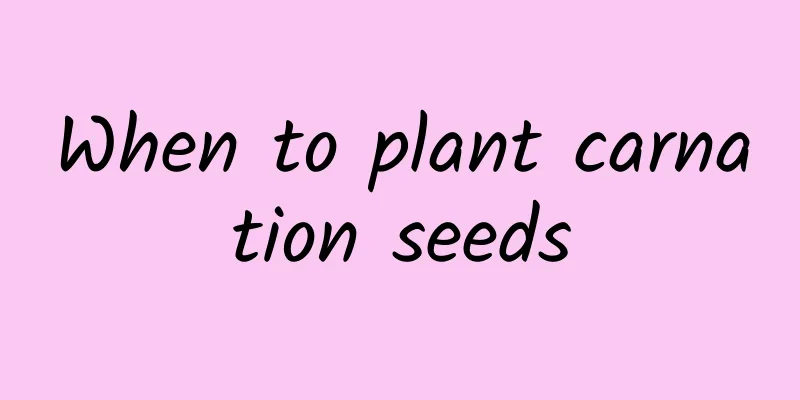How to grow nectarines

1. Maintenance methods1. Temperature: It is best to keep it in a warm environment. Generally speaking, it is acceptable to be between fifteen and thirty degrees, and the requirements are not particularly strict. However, it will be damaged by conditions that are too cold, and it will die if it encounters frost. In addition, high temperatures will affect its growth rate, so you need to pay attention to both. 2. Light: Mannatto does not require much sunlight, but it is sensitive to strong light. Therefore, it is generally best to grow it in a semi-shaded environment and be sure to avoid direct sunlight, especially in summer. 3. Watering: Mandelieu likes moisture. Wild manna seeds are found in moist places or near water. Therefore, we have to maintain it with relatively high requirements: sufficient water must be provided. However, sufficient amount does not mean that water can accumulate. If water accumulates, try to drain it out in time. 4. Fertilization: Manna seeds do not require much fertilizer. You can choose to plant them in a place with good soil, and there is basically no need for top dressing. 2. Breeding techniques1. Reproduction: Sowing method can be used. After the seeds are harvested, they can be stored properly. Then, between March and April in late spring, you can take them out and sow them. Generally speaking, the "row sowing" method is common. After sowing the seeds, they need to be covered with a thin layer of soil. After that, the temperature should be between 20 degrees Celsius for a period of time. In this way, the germination rate is still relatively high. 2. Pruning: After the beginning of spring, its growth will be more vigorous, and its leaves may appear more messy at this time. You can trim off some of them appropriately, mainly those that are dry and older, to avoid affecting light transmission and breeding some diseases and pests. 3. Problem diagnosis and treatment1. Diseases: Diseases with relatively high incidence rates include "leaf blight" and "anthracnose". It is more likely to occur from July to October. When spraying pesticides, you also need to ventilate more and control the density. 2. Pests: Pests are relatively uncommon. If the number is small, you can simply capture them manually or use tools to remove them. IV. Other issues1. Toxicity: Manluzi is non-toxic, and as a traditional Chinese medicine, it has a good effect. 2. Can it be raised at home? It is usually grown on a large scale and not raised at home. |
<<: How to grow hibiscus sunflower well
Recommend
How to grow Camellia sasanqua
1. Appropriate moisture Camellia sasanqua grows w...
What are the cultivation methods and precautions of golden pine
How to cultivate golden pine Golden pine is a pla...
Cassava cultivation method
1. Soil Cassava has strong adaptability to soil a...
Shanghai rapeseed planting time and method
Shanghai rapeseed planting time Shanghai green ra...
How to grow durian seeds in small pots
1. Seed treatment After cleaning the durian seeds...
The money tree doesn’t look good? How to prune, see how flower lovers do it
Summer pruning When pruning, you should cut off t...
How to maintain keel in winter
Is the keel afraid of freezing? The optimum tempe...
Which month is suitable for sowing cauliflower?
Cauliflower , also known as cauliflower or brocco...
How to care for red sandalwood in winter
Is small-leaf red sandalwood afraid of cold? The ...
How to grow bamboo palm well
Palm bamboo growth conditions Brown bamboo prefer...
How to grow orchids in spring
1. Lighting Orchids are not tolerant to strong li...
How to Propagate White Orchid
Grafting The most recommended method for propagat...
What vegetables are suitable for growing in the south in summer?
What vegetables are suitable for growing in the s...
What fertilizer is good for green radish
1. What fertilizer to use This plant is relativel...
How to propagate the Falling Flower Dance
The method of cutting the flower dance: simply an...









